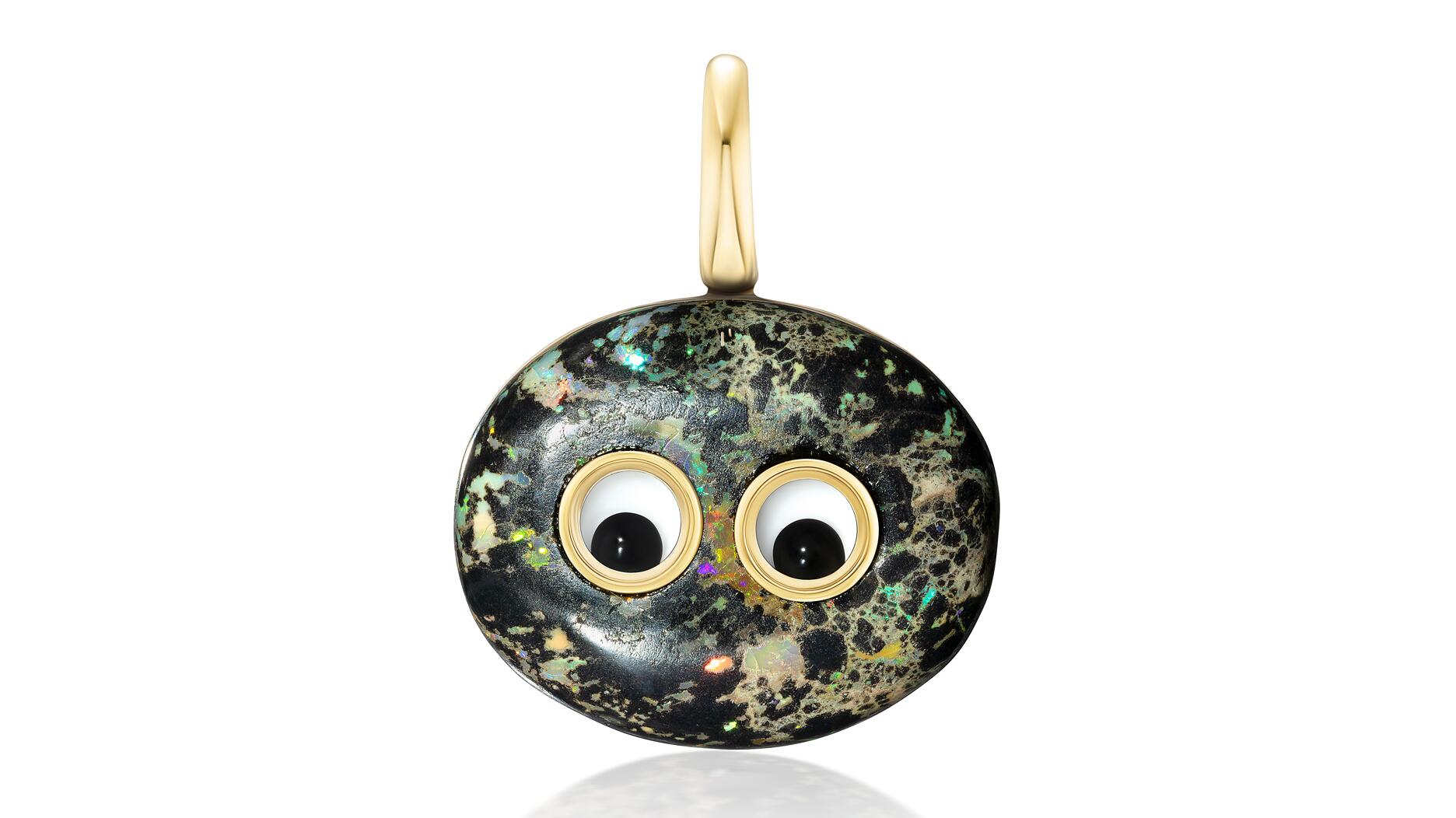The couple pleaded guilty to concealing at least $127 million in cash transactions at its precious metals businesses.
Response to Mozambique tourmaline
We received the following from Joseph I. Szweda in response to our January 29 article, "GIA explains pink zones in Mozambique tourmaline." You can find the original article at: http://www.nationaljewelernetwork.com/njn/cc/search/article_display.jsp?vnu_content_id=1003936212 Dear Editor, I recently read your January 29th article regarding...
We received the following from Joseph I. Szweda in response to our January 29 article, "GIA explains pink zones in Mozambique tourmaline." You can find the original article at:
http://www.nationaljewelernetwork.com/njn/cc/search/article_display.jsp?vnu_content_id=1003936212
Dear Editor,
I recently read your January 29th article regarding pink color zones in the tourmalines mentioned in the subject of this email. I was forwarded a link through a dealer who I've done business with as well as others in my family.
While I do see someone like Koivula as being credible, and your article cites the concerns with indicators of difussion treatment, I see the door for misuse and a lack of clarification. The concerns stem from Mr. Robert James, GG with his published imagery of what appears to be lattice diffusion and/or surface diffusion treatments of tourmalines. The zoning you have in your picture is one thing. We can find these types of zones in certain sapphires too. Something like that, I don't think anyone is too concerned with.
However, I fear there is a lack of distinction in the concerns. The zoning in question raised by those such as Mr. James clearly illustrates concentric color cores. Pending the image, one appears to be surface diffusion treatment, and the other appears to be lattice diffusion treatment. I can see the potential for things like this article being used to calm the troubled "pool waters", but I see a problem as a result. It appears that this is an effort in which we're focusing too much on chemical composition and ignoring other tests that are less expensive for one, and some of these tests appear to preclude a more uniform and standard methodology of testing.
Additionally, I can see where someone could use the buzz words "pink color zone" and "Moazambiuqe paraiba/copper-bearing tourmaline" to imply natural. Concentric color cores are forms of zoning, are they not? We see both forms of zoning in sapphires. Do we simply then assume all color zoning to be naturally occuring and simply accept it as that? Some places and dealers might, but people as myself know better than this. I'm sure you and others in the industry are aware of that too.
I also see something else disturbing. There are those who will ignore other evidence of enhancements in these stones, and there is a lack of investigation as to the behavoirs of some of these inclusions we find in

This imagery is of an 8.05 carat copper bearing tourmaline. It was appraised by a GG. It was identifed as being such. It's copper bearing alright.

This is a 5.04 carat from the same source and appraised the same.

This particular image illustrates certain anomolies near these growth tubes that we all know about. I have others that when printed, you can see the colorless branch that looks just like the flux you see with Mong Hsu disease. These artifacts match, and I have other pictures of solid single phase inclusions that:
- The body of the inclusion doesn't match the color of the host.
- The anatomy of artifacts is consistent with flux fillers.
- There is photographic evidence of filler material like that of flux healed rubies.
- The shape of some of these inclusions is like that seen in oil filled regions of emeralds, opals, etc., except they are solid.
- There are instances in which there are some artifacts that look like smoke rings like you see in lattice diffusion treated sapphires.
These images were obtained using a test known as microscopic imagery technique (20x-225x). The last image is somewhere between 170x and 215x if my memory serves correctly I need to check my notes on that. The former of the 2 were done with oil immersion testing using Wal-Mart brand baby oil, a cheap plastic containter for an immersion cell, a Sharper Image flashlight with 2 sheets of paper to difusse the light, and the same microscope.
Why doesn't GIA do a study on that as there is evidence in the imagery (and with a little contrast to bring things out not display here but in print) that says flux healing has occured? Forget these la-di-da test. This is another treatment going on that nobody is talking about. When I shared my findings with Mr. James, he congratulated me on my find. He said my research was on the money.
If you would like more imagery or documentation on these 2 samples, I will be more than happy to share them for the purposes of reference, education and discussion. I would be willing to allow these things to be published if you wished to do something like that so long as I am given credit for my work.
I send this because this illustrates not only the technical aspects of these stones, but it illustrates how a lack of knowledge, abused trust and a lack of inspection as well as a lack of uniformly accepted methodologies allows these things to go to where they have. It's an industry issue, and I write this not only as an aspiring desginer but a collector. This sort of thing and the neglecting of things like this will only shatter the trust not just within the industry, but with the consumer in regards to the industry. To do anything but to take this by the horns and be as explict as we can about it is only going to do more harm than it will good.
Thanks..
Joseph I. Szweda
The Latest

Consumers shared concerns about prices, inflation, tariffs, trade, and politics in the survey’s write-in response section.

In February 2026, the auction house will move its headquarters to the former Steinway Hall, a neoclassical landmark on Billionaires’ Row.

How Jewelers of America’s 20 Under 40 are leading to ensure a brighter future for the jewelry industry.

The new show will take place Jan. 23-25, 2026.


The former BHP Billiton leader and Gemfields chairman is remembered for his influential leadership throughout his 50-year mining career.

The LVMH-owned brand has partnered with the costume design union to revamp its award for 2026.

Roseco’s 704-page catalog showcases new lab-grown diamonds, findings, tools & more—available in print or interactive digital editions.

The luxury titan inked a deal to acquire an initial minority stake in the jewelry manufacturer with a pathway to full ownership by 2032.

The company’s curation of unsigned vintage and estate jewelry debuted at the Bloomingdale’s in Costa Mesa, California.

In the recent multi-shipment seizure, CBP also found counterfeit Audemars Piguet, Moncler, and Chrome Hearts items.

Jewelers of America execs and National Jeweler editors discuss tariffs, the sky-high gold price, and the engagement that broke the internet.

The luxury goods company said founder Ippolita Rostagno will remain at the brand’s helm.

Laura Burdese, who joined the Italian luxury brand in 2022, will take on the role in July.

Need a gift for the cat lover who has everything? Look no further than our latest Piece of the Week.

It purchased the “Grosse Pièce,” an ultra-complicated Audemars Piguet pocket watch from the ‘20s, for a record-breaking price at Sotheby’s.

The lab-grown diamond grower now offers custom engagement and fashion jewelry through its Kira Custom Lab Jewelry service.

Chandler got his start at Michelson Jewelers and has served as DCA president and CEO since 2001. He will retire at the end of the month.

The boutique is slated to open this week inside Terminal 8, offering pre-owned Rolex watches and more to international travelers.

Sponsored by Digital Monitoring Products

The special-edition egg pendant ingested in a New Zealand jewelry store was recovered after a six-day wait.

Associate Editor Natalie Francisco plays favorites with Piece of the Week, selecting a standout piece of jewelry from each month of 2025.

The “Love and Desire” campaign is inspired by the magic that follows when one’s heart leads the way, said the brand.

Two awardees will receive free tuition for an educational course at the Swiss lab, with flights and lodging included.

Berta de Pablos-Barbier will replace Alexander Lacik at the start of January, two months earlier than expected.

Sotheby’s held its first two jewelry sales at the Breuer building last week, and they totaled nearly $44 million.

Winners will receive free registration and lodging for its fourth annual event in Detroit.


























